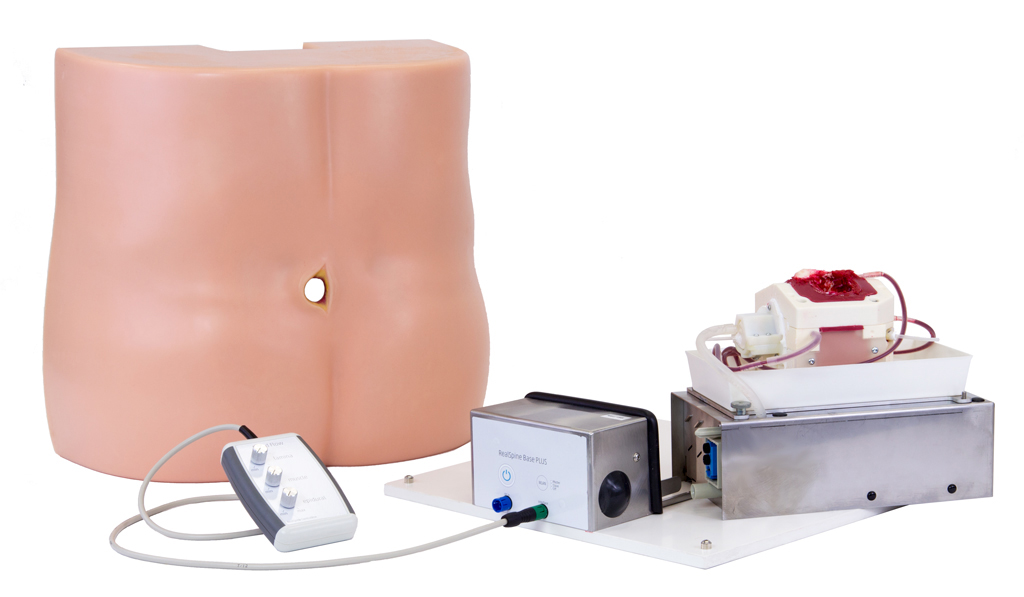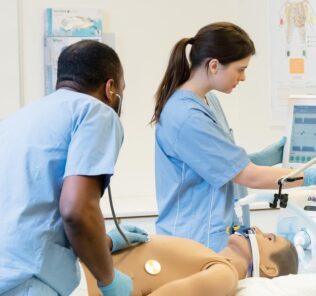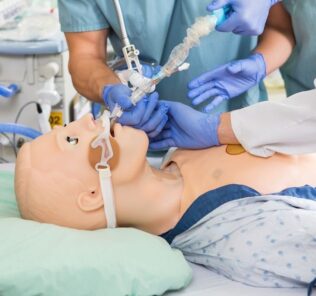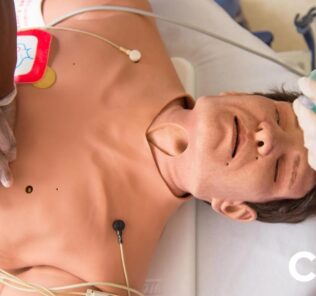"RealSpine" Surgical Simulator Provides High-Fidelity Procedure Training
I recently received some information about a new surgical simulator from “Real Spine” which caught my attention. Based on artificial materials, the simulator offers a great opportunity to practice interventions on the spine. Due to its realistic anatomical structures, soft tissues and intraoperative bleeding system the simulator is almost as realistic as a real patient. To me, the more task trainers specific to exact training procedures the better. number of specific task trainers on the market. The level of high-fidelity moulage inherent with this system is easy to see with the video below:
Sponsored Content:
More About RealSpine from Their Website:
Simulation systems have become an integral part in many areas. There are simulators for the training of pilots and especially for the training of future surgeons. They offer ranges from virtual simulators to mechatronic simulation systems that behave as realistic as a real patient. This includes RealSpine. The idea of developing a simulation system was created in 2010 at the Innovative Surgical Training Technologies (ISTT) at the Leipzig University of Applied Sciences (HTWK Leipzig).
In 2012 after an intensive cooperation between medical doctors and engineers the first prototype was presented. In the coming years, the simulator has been steadily improved and extended by additional components. He has realistic anatomical structures, soft tissues and intraoperative bleeding system. This allows future surgeons to train interventions on the lumbar spine with real instrument and simulated complications, like an injury to the dura with cerebrospinal fluid flow, under realistic conditions without risking a patients’ life. The structures of the simulator can be pulled, stretched, twisted, punched, cut, and milled. The six bleeding points and the integrated system to control surgical bleeding allow an optimal control of the bleeding intensity including suctioning, plugging and bone wax. Thus different levels of difficulty, from basic to advanced surgical procedures, can be simulated.
Another advantage of the simulator is its modular system. The RealSpine training system consists of a base station and a training unit. The RealSpine base station is the platform to connect different types of training units, simulating different parts of the human spine. The training unit can be exchanged by another in less than one minute. All consumables such as anatomical parts, fluid blood and cerebros
pinal fluid are included in the training unit. Real Spine is unique in its form, so far there is no comparable system for the training on the lumbar spine.
Sponsored Content:

RealSpine Training Opportunities include:
- Laminectomy
- Flavectomy
- Foraminotomy
- Facetectomy
- Removal of lumbar disc herniation
- Discectomy
- Preparation of interbody endplates
- TLIF via interlaminar application
- Dura suture
- Duraplasty
About ISTT and RealSpine
RealSpine has been developed at the ISTT, part of the Leipzig University of Applied Sciences (HTWK Leipzig). The ISTT is a team of young scientists from various disciplines, including physicians, engineers, educators, psychologists and computer scientists. At ISTT we research and develop innovative solutions for surgical training. Essentially, this involves the development of innovative mechatronic simulation systems, innovative training operating rooms, innovative surgical training concepts, ergonomics and quality management in the operating room. An important result of the research is the simulation system for the lumbar spine RealSpine, which is intended to improve the medical education and to increase patient safety. RealSpine has been tested and validated by experienced surgeons and is used in workshops and courses in cooperation with the medical faculty at the University of Leipzig.
To learn more, check out RealSpine.de today!
Lance Baily, BA, EMT-B, is the Founder / CEO of HealthySimulation.com, which he started in 2010 while serving as the Director of the Nevada System of Higher Education’s Clinical Simulation Center of Las Vegas. Lance also founded SimGHOSTS.org, the world’s only non-profit organization dedicated to supporting professionals operating healthcare simulation technologies. His co-edited Book: “Comprehensive Healthcare Simulation: Operations, Technology, and Innovative Practice” is cited as a key source for professional certification in the industry. Lance’s background also includes serving as a Simulation Technology Specialist for the LA Community College District, EMS fire fighting, Hollywood movie production, rescue diving, and global travel. He and his wife live with their two brilliant daughters and one crazy dachshund in Las Vegas, Nevada.
Sponsored Content:


















